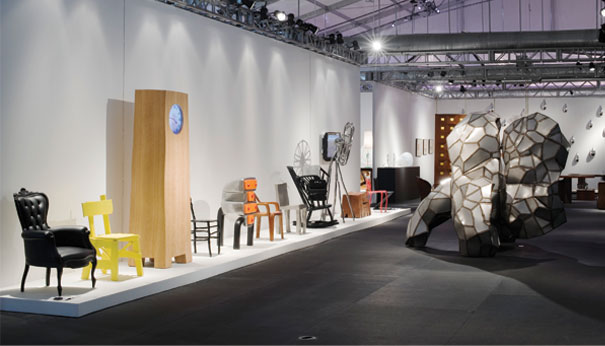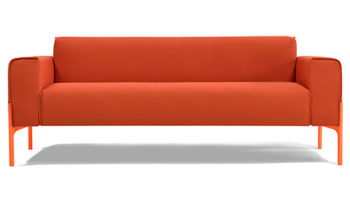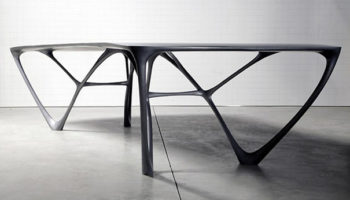Live at Design Miami: Maarten Baas Named Designer of the Year
Design Miami named Maarten Baas Designer of the Year this 2009, which fulfills my belief that The Netherlands is plotting to take over the world, one piece of design at a time. You’ve probably seen some of the work done by Baas all over cyberspace, including his well-named Haphazard Harmony. Inside the Design Miami tent, Maarten Baas had his very own giant space all to himself in his honor to do with as he pleased. Contained therein, smack in the middle of the exhibition building, was a retrospective of his work, as well as a brand new piece commissioned specifically by Design Miami as part of the award.
Designer of the Year, Maarteen Baas.
Some familiar pieces included Clay Fan and Hey Chair, Be a Bookshelf!—both of which illustrate the designer’s unconventional approach. When asked if design implied products that are necessarily useful, Baas replied: “To make it easy you could say: once it’s for use, it’s design. But even that is not a definition which covers all situations. What would happen if you would use a Mondrian painting as a serving tray, or you hang a serving tray on the wall, and never use it? You can discuss hours about it, and write all kinds of essays, but you can also decide not to do that…” His official show piece, The Shell, is an ovoid cabinet of triangular planes situated on three legs. It opens to reveal a wood interior, complete with two ever-practical shelves. I like to think it’s the type of container that would hold only esoteric things: a modern Wunderkammer, The Shell might hold curiosities like a menagerie of animals knitted out of their own fur or a collection of Pez dispensers.


But it was the Real Time installation by Baas that really struck me (that pun intended, as with any puns to follow). Grandfather Clock was a large wooden piece with a porthole or clock face, wherein a blurry gentleman changed the time using a ruler and a red dry erase marker. The time was accurate. Every time the minute changed, the man inside the clock (I’m guessing here, but more than one attendee measured the clock’s height and depth to ascertain whether a man could indeed be in there; it’s surprising how many people carry around measuring tapes) erased the old marker of time with a balled up piece of paper towel and redrew the current time—keeping us up-to-the-minute. The Real Time Performance included a wild-eyed man in a box who changed the position of rubber hour and minute hands on a clock that faced out on the other side of the wall—again, the time was correct. Real Time Analog Digital Clock looked like a simple digital watch, but the shapes that made up each number were actually drawn in and erased as needed by a man inside the clock (this was a video, unless Baas already has access to miniaturization technology as part of his country’s plot for world domination). All of these pieces may comment on the nature of time: it is fleeting, fast, fantastic, deceptive, and mysterious; it cannot be controlled by analog or digital clocks, the hand of man, etc. and so forth. Baas himself may offer a real clue in his answer to the question, What are the boundaries of design?: “Every day there are only 24 hours in which that day has to happen.”




Leave a Reply